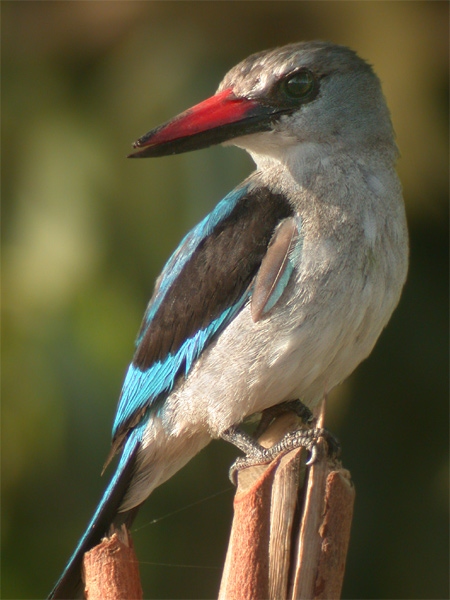- Halcyon senegalensis
Identification
20-23 cm. Bright blue back, wing panel and tail, white head, neck and underparts, black shoulders, red upper mandible and black lower mandible, bright red legs, dark stripe through the eye, black underwing, primaries and secondaries, white underwing coverts, white breast. Sexes similar. Juveniles - duller and brown bill.
Distribution
Sub-Saharan Africa.
Taxonomy
Halcyon senegalensis has three subspecies:[1]
- H. s. senegalensis
- Senegambia to Ethiopia and northern Tanzania
- H. s. fuscopileus
- Sierra Leone to southern Nigeria and Congo basin
- H. s. cyanoleuca
- North-western Tanzania to Angola, Botswana and KwaZulu-Natal
Habitat
Wooded areas, especially with acacia trees.
Behaviour
The nest is a tree hole and 3 round white eggs are laid.
The diet includes large insects, other arthropods, snakes, fish and frogs.
References
- Clements, JF. 2008. The Clements Checklist of Birds of the World. 6th ed., with updates to December 2008. Ithaca: Cornell Univ. Press. ISBN 978-0801445019.
Recommended Citation
- BirdForum Opus contributors. (2025) Woodland Kingfisher. In: BirdForum, the forum for wild birds and birding. Retrieved 16 May 2025 from https://www.birdforum.net/opus/Woodland_Kingfisher
External Links
Search the Gallery using the scientific name:
Search the Gallery using the common name:
GSearch checked for 2020 platform.





